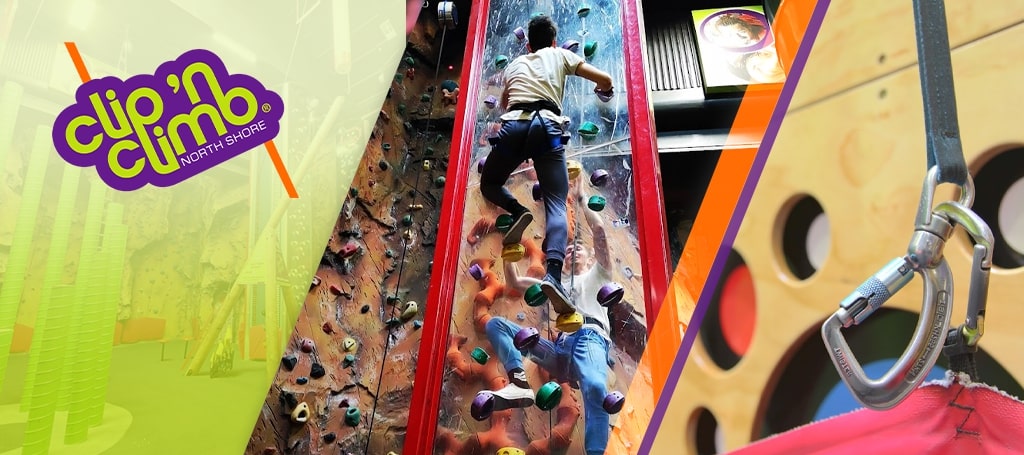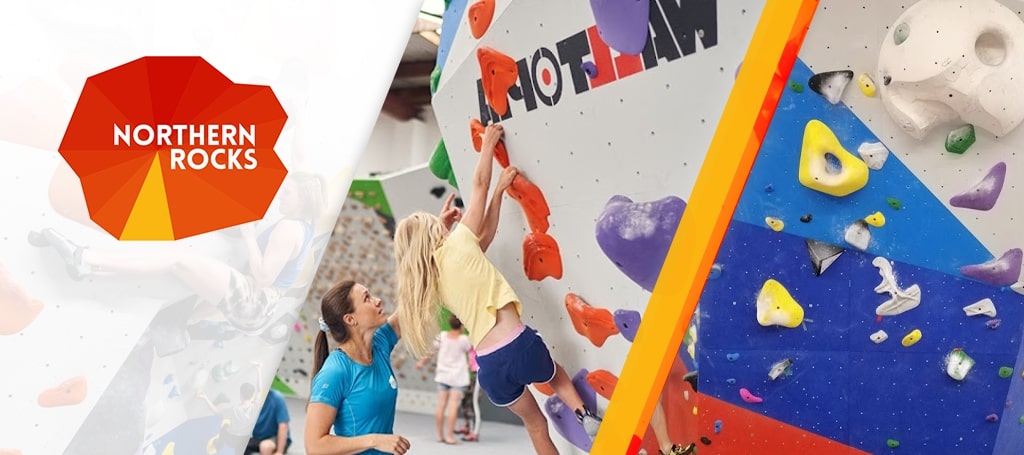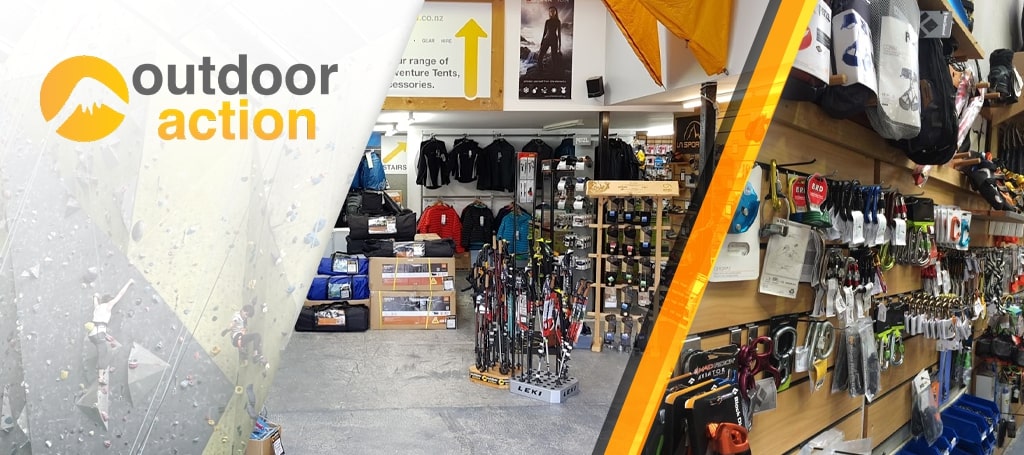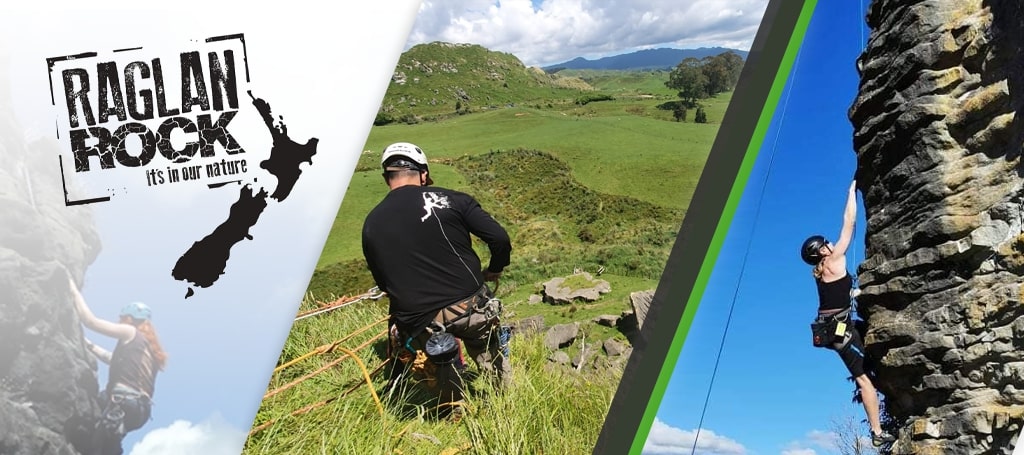The 7 Best Rock Climbing Centres in Auckland
- 1) Extreme Edge Panmure
- Highlights
- Customer Reviews
- 2) Clip ‘N Climb
- Highlights
- Customer Reviews
- 3) Northern Rocks Climbing
- Highlights
- Customer Reviews
- 4) Vertical Adventures
- Highlights
- Customer Reviews
- 5) Birkenhead Pool and Leisure Centre
- Highlights
- Customer Reviews
- 6) Outdoor Action
- Highlights
- Customer Reviews
- 7) Raglan Rock
- Highlights
- Customer Reviews
Rock Climbing is an exciting sport you and your kids can look forward to. Whether you’re a first-timer or an elite climber, you’re in luck, as we’ve listed the best rock climbing centres in Auckland.
We’ve looked around and chosen gyms that have safe, exciting and fun courses, together with expert and caring staff, plus outstanding scores in customer reviews.
And without any further ado, here are the best rock climbing centres in Auckland!
1) Extreme Edge Panmure

| Best for | Fun Rock Climbing for All Skill Levels |
| Services | Youth Teams, Lead Clinics, Private Lessons, Birthday Parties, Team Building, School Groups and Holiday Programmes |
| Address | 32 Morrin Road, Panmure, Auckland 1072, New Zealand |
| Contact no | 09 574 5677 |
| Website | http://www.extremeedge.co.nz/ |
Doing anything on the weekends? Try rock climbing with your kids in Extreme Edge Panmure as a way to keep fit and try something new — but don’t worry, their services are completely safe and supervised.
It used to be an aircraft hangar converted into a popular rock climbing venue for both kids and adults. Its 4-story-high and one-fourth-acre-sized location lets it have more than 200 climbing routes.
They offer casual climbing, private classes, team building, group and party programmes to suit people of all skill levels. Safety equipment and harnesses are also provided so you can come by and just have fun.
Highlights
- Safe and supervised rock climbing
- Offers a range of climbing activities and classes
- Over 200 routes to choose from
- Harness and equipment can be provided
Customer Reviews
Extreme Edge Rock Climbing received rave reviews from 948 climbers or customers. Kim Chand said:
“Love this place. There’s rock climbing for all ages and has an indoor playground which my daughter absolutely loved, was difficult to get her to leave lol. We’ll definitely be back.”
2) Clip ‘N Climb

| Best for | Thrilling Indoor Rock Climbing |
| Services | Birthdays, Schools, Fundraising, Groups and Gift Ideas |
| Address | Capitol Cinema Building, 610 Dominion Road, Mount Eden /Balmoral, Auckland, New Zealand |
| Contact no | 09 630 6040 |
| Website | https://www.clipnclimb-auckland.co.nz/ |
If you’re up for a rock climbing challenge, then Clip ‘N Climb is the place to go! They have about 34 tracks you can climb that are super-fun and thrilling from the starting point all the way to the very top.
Their highly trained personnel will take care of you and inform you about the correct and safe way to climb. Each session is for one hour, including gearing up with the harness.
Show your courage with the Leap of Faith and Vertical Drop Slide, which are beloved by kids. Or try the RealRoc wall — a natural indoor rock rife with ledges, cracks, and laybacks.
Highlights
- Thrilling and enjoyable experience
- Highly trained staff
- RealRoc wall for authentic rock climbing experience
- Super-fun Leap of Faith and Vertical Drop Slide
Customer Reviews
Kepa Harris wrote on Google Reviews:
“Awesome staff, very friendly and helpful. The facility itself is wonderful, excellent quality equipment, environment is of great fun and decent music. Kids had a great time.”
3) Northern Rocks Climbing

| Best for | Bouldering Classes |
| Services | Bouldering Classes, Pro Shop, Youth Climbing and Personalised Coaching |
| Address | 111 Diana Dr, Glenfield, Auckland, New Zealand |
| Contact no | 09 278 2363 |
| Website | https://www.northernrocks.co.nz/ |
Hone your bouldering skills at Northern Rocks Climbing. Here, you have professional coaches who can train you to improve your climbing and movement through each class.
The bouldering walls are safety-designed by eminent company Walltopia. They are made of hardwood birch plywood with great durability, which securely holds the boards or boulders in place.
What’s more, they have a complete list of amenities, such as a calisthenics, shower, and training areas. People, especially teens, will definitely love the challenge here.
Highlights
- Very safe, fun and challenging
- Passionate and experienced coaches
- Has shower, calisthenics and training areas
Customer Reviews
Alexander Hamilton explains why Northern Rocks Climbing is one of the best rock climbing centres in Auckland:
“Probably the best bouldering gym in Auckland. The space is super friendly and comfortable as a newcomer. They have good sets with lots of variation, plus they’ll usually change stuff up every couple of weeks. A great spot to go if you’re serious about bouldering — or just looking to try it out.”
4) Vertical Adventures

| Best for | Kid-Friendly Rock Climbing |
| Services | Kids Climbing, Adults Climbing, Climbing Education and Birthday Parties |
| Address | 5A Waikaukau Road, Glen Eden, Auckland, New Zealand |
| Contact no | 09 818 3038 |
| Website | https://verticaladventures.co.nz/ |
For wonderful and colourful climbing themes for kids, you won’t go wrong with Vertical Adventures. With 30 exciting themes, your kid will learn, play and get to have fun rock climbing.
This place is also an excellent place to celebrate your kid’s birthday. There are lots of things to do for fun, like rock climbing, arcades, hangouts, and the like.
By the way, they also offer rock climbing for adults from routes that are easy to those that push you to the limit. This is definitely one of the best rock climbing centres in Auckland you can go to.
Highlights
- 30 exciting climbing themes for kids
- Thrilling climbing routes for adults
- Offers birthday party celebration and school PE programmes
- Committed and highly trained staff
Customer Reviews
Mark Prendergast had a fantastic time at Vertical Adventures. He wrote:
“Vertical Adventures is the best rock climbing gym around. They have a good variety of climbs for everyone and they have a really friendly and supportive culture. I love it!”
5) Birkenhead Pool and Leisure Centre

| Best for | Rock Climbing Workouts |
| Services | Training Wall, Top Rope Wall, Bouldering, Lead Wall and Battle Rope |
| Address | 46 Mahara Avenue, Birkenhead, Auckland 0626, New Zealand |
| Contact no | 09 484 7290 |
| Website | https://aucklandleisure.co.nz/locations/birkenhead-pool-and-leisure-centre/ |
For those who enjoy a good sweat and workout, you should go to Birkenhead Pool and Leisure Centre. They have a gym, indoor pool, and rock climbing area to keep your body fit and healthy.
You can do a range of rock climbing activities there, such as top rope wall (10 m high) in 40 different routes, and you can also try bouldering (a.k.a. free climb) to strengthen and tone your body.
With their adept instructors, they will teach you the proper way to climb and move from rock to rock. Equipment is provided at the facility, so all that’s left is for you to power upwards and feel the thrill!
That’s why we reckon — and their customers will agree — this is also one of the best rock climbing centres in Auckland! You get great thrills, instructors, and services.
Highlights
- Great for workouts
- Exhilarating, healthy rock climbing activities
- Diverse climbing routes
- Skilled and kind instructors
Customer Reviews
Elly Pickering left a review on Google Reviews. She said:
“Great facility for rock climbing! Caters for all levels of fitness, brilliant induction process for first time users. Highly recommend this for group activities ?”
6) Outdoor Action

| Best for | Outdoor climbing |
| Services | Climbing, water, and outdoor sports gear, outdoor accessories |
| Address | 264a Bawden Road, Albany 0792, New Zealand |
| Contact no | +64 9-486 5386 |
| Website | https://www.outdooraction.co.nz/ |
As their name suggests, Outdoor Action encourages Kiwis to practise sports out into the natural resources that the country has. So, if you want to start rock climbing with actual rocks and mountains, you should check out this shop.
Although this shop isn’t a climbing centre, it still helps climbing enthusiasts by providing appropriate gear and accessories for outdoor climbing. This family-owned business also provides accessories and gear for camping and watersports.
They have everything, from climbing essentials like ropes and harnesses to personal gear such as climbing shoes and helmets. You can even purchase Alpine climbing equipment for extreme climbing from Outdoor Action.
Highlights
- Outdoor climbing, camping, and watersports
- Climbing gear, essentials, and accessories
- Family-owned business
Customer Reviews
Here’s what Peter James Iti has to say about Outdoor Action’s products and customer services:
“Delivery was prompt and Tim helped me through getting the right pair of climbing shoes. Fantastic service.”
And there you have it — the best rock climbing centres in Auckland! Kids and adults can have a super-enjoyable time with total safety rock climbing at these places.
Any questions at all about the gyms we included? If you have one, feel free to send us a message, and we will get back to you as soon as we can.
Now, rock climbing is an excellent physical sport, but you may also want to unwind and let go of negativity of the week by doing something a bit less rough — maybe something like yoga. For that, you can read about the best yoga studios in Auckland.
7) Raglan Rock

| Best for | Real-rock climbing experience |
| Services | Rock climbing, canyoning, caving, school groups |
| Address | 33 Simon Road, Raglan 3225, New Zealand Hours |
| Contact no | +64 800 724 7625 |
| Website | https://www.raglanrock.com/ |
If you want to take your skills to the outdoors, then Raglan Rock should be who you should contact. They’ve been in the business since 2012, so you can be sure they know the best sites around Auckland.
Raglan Rock has one of the highly-qualified tour guides to help you on your outdoor adventure. They offer various outdoor activities involving rocks, including rock climbing, caving, and canyoning.
You can choose traditional climbing, sports climbing, or real rock climbing experience. Some of their packages are also family-friendly so that you can enjoy rock climbing even with kids.
Highlights
- Sports rock climbing package good for 12 years old and up
- Traditional rock climbing classes for 16 years old and up
- Family-friendly rock climbing experience complete with gear
- Highly-qualified tour guides
Customer Reviews
With their various packages, a day with Raglan Rock can be great for all types of groups. Here’s a review a customer left on TripAdvisor:
“Had a great family day out climbing with Travis as our guide. I especially appreciated how he found climbs suitable for our entire family. Perhaps the best surprise was finding that there was a long drop at the crag! I mean how fancy is that. 😉 The kids also loved finding spectator sheep half way up the wall next to them lololol.”
And there you have it — the best rock climbing centres in Auckland! Kids and adults can have a super-enjoyable time with total safety rock climbing at these places.
Any questions at all about the gyms we included? If you have one, feel free to send us a message, and we will get back to you as soon as we can.
Now, rock climbing is an excellent physical sport, but you may also want to unwind and let go of negativity of the week by doing something a bit less rough — maybe something like yoga. For that, you can read about the best yoga studios in Auckland.



